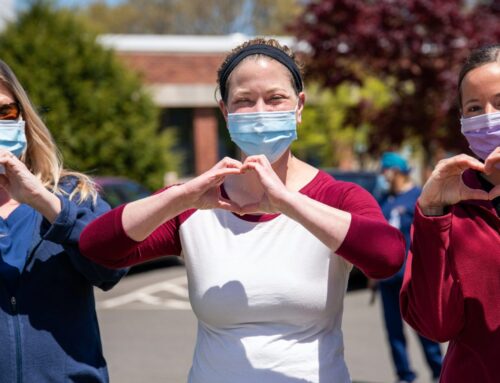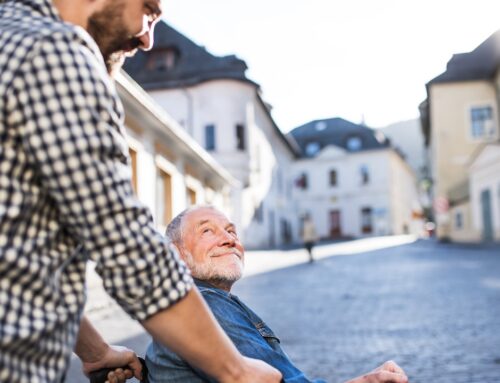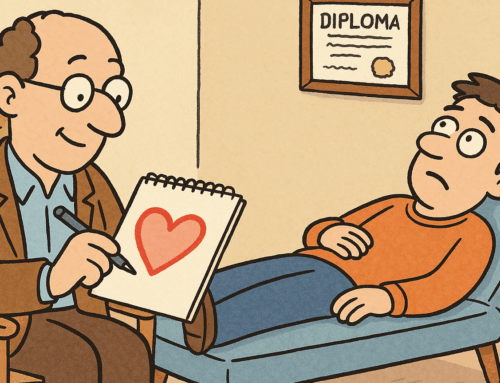Does it Pay to be Kind?
We are all familiar with the phrase “random act of kindness”. If you google the term, you will find local news clips applauding the kindness of people helping others. GoFundMe, a popular crowdfunding website, has facilitated billions of dollars of fundraising to help others. Examples range from smaller fundraisers set up to send students on a class field trip to larger fundraisers of over $80,000 raised for a woman who needs a lung transplant.
In our everyday life we often do and receive small acts of kindness like listening to a friend who needs support or holding the elevator for a stranger. If you’ve ever been on the receiving end of a random act of kindness, you know that experience can feel rewarding. Whether it be because you were in need or out of the blue, these acts of kindness are helpful for a well-functioning society and can help us feel more connected to others (Steger et al., 2008).
These types of positive behaviors directed toward others are often termed “prosocial behaviors”. Generally defined, prosocial behavior is voluntary on the part of the actor and it is intended to benefit another person (Eisenberg & Miller, 1987). Prosocial behavior can be something that benefits the actor, for example loaning a friend your car knowing that one day they will return the favor, or something with no expected benefit, like filling up a stranger’s parking meter. The latter is also referred to as “altruism”.
Prosocial behavior has biological roots. Even rats have been shown to exhibit prosocial behavior, freeing a trapped cagemate but not showing the same behavior to free an inanimate object (Bartal et al., 2011). In the same study, when freeing the cagemate was pitted against opening another box containing chocolate (rats like chocolate!), the rats opened both boxes freeing their cagemate and then sharing the chocolate. Human infants as young as 6 months old prefer others who perform prosocial behavior over those who perform neutral or antisocial behaviors (Holvoet et al., 2016).
Is prosocial behavior beneficial for the giver?
Prosocial behavior can be good for your health and is linked to increased happiness (Aknin et al., 2013), self-esteem (Bandura et al., 2001), and lower depressive symptoms (Telzer et al., 2014). Being prosocial can also improve the way others view you, with more prosocial people having increased acceptance among peers (Layous et al., 2012). Prosocial behavior can also get under the skin, leading to reductions in gene expression linked to disease risk (Nelson-Coffey et al., 2017). It is well established that being prosocial has benefits for our mental and physical wellbeing.
But does being prosocial actually feel good or do we do it because we think we should?
Recent work using neuroimaging techniques has found that neural networks related to reward are activated when people engage in prosocial behavior (Telzer et al., 2014). In fact, these regions are activated even just watching others experience positive outcomes (Morelli et al., 2014). These findings suggest that we feel rewarded when others experience positive things. This is supported by additional study findings that this reward circuitry is involved when giving to others is required (e.g., through taxation) rather than voluntary choice (Harbaugh et al., 2007). People are also inclined to engage in prosocial behavior even when it comes at a cost to themselves (Telzer et al., 2014; Zaki & Mitchell, 2011).
How can we encourage people to increase their everyday prosocial behaviors?
Given the link between prosocial behaviors and positive health and social outcomes, there is scientific and public interest in understanding how we might encourage people to engage in more prosociality.
Although neuroimaging findings suggest people are motivated to engage in prosocial behavior, there are individual differences in how often people actually act prosocially in their everyday life.
Some of these differences are characterized at the environmental level, with lower socioeconomic status individuals showing more generosity, charitability, and helpfulness (Piff et al., 2010). Toddlers who have parents that more often discuss emotions help and share more quickly (Brownell et al., 2013). Other differences are seen at the neural level with adolescents who show greater activation in perspective taking brain regions when evaluating prosocial behavior being more likely to engage in prosocial behavior themselves (Tashjian et al., 2018). Differences in prosocial behaviors have also been linked to temperament; more sociable children exhibit more prosocial behavior (Eisenberg et al., 1996) and prosocial behavior is positively related to better self-regulation and less emotional reactivity (Carlo et al., 2012; Eisenberg et al., 1996).
Understanding individual differences in prosocial tendencies has led to development of some successful interventions. For example, the CEPIDEA program is a school-based intervention that has generated increases in prosocial behavior during early adolescence (Caprara et al., 2014; Caprara et al., 2015). CEPIDEA has four major components: (1) exposure to prosocial values, (2) development of emotion regulation skills, (3) development of perspective-taking skills, and (4) improvement of communication skills. These four components have been linked to differences in prosocial behavior.
It pays to be kind; prosocial behavior is not only beneficial for society, but it has positive mental and physical health benefits for the giver. The more we understand about the benefits of prosocial behavior and the different characteristics of individuals who are prone to behave prosocially, the more successful intervention development and implementation may be.
Sarah M. Tashjian, J.D., Ph.D.
Postdoctoral Scholar in Affective Neuroscience
California Institute of Technology
This article originally appeared in Psychology in Action and has been posted here with permission.
References
Aknin, L. B., Barrington-Leigh, C. P., Dunn, E. W., Helliwell, J. F., Burns, J., Biswas-Diener, R., … Ashton-James, C. E. (2013). Prosocial spending and well-being: Cross-cultural evidence for a psychological universal. Journal of Personality and Social Psychology, 104, 635-652.
Bandura, A., Caprara, G. V., Barbaranelli, C., Pastorelli, C., & Regalia, C. (2001). Sociocognitive self-regulatory mechanisms governing transgressive behavior. Journal of Personality and Social Psychology, 80, 125-135.
Bartal, I. B. A., Decety, J., & Mason, P. (2011). Empathy and pro-social behavior in rats. Science, 334, 1427-1430.
Brownell, C. A., Svetlova, M., Anderson, R., Nichols, S. R., & Drummond, J. (2013). Socialization of early prosocial behavior: Parents’ talk about emotions is associated with sharing and helping in toddlers. Infancy, 18, 91-119.
Caprara, G. V., Luengo Kanacri, B. P., Gerbino, M., Zuffianò, A., Alessandri, G., Vecchio, G., … Bridgall, B. (2013). Positive effects of promoting prosocial behavior in early adolescence: Evidence from a school-based intervention. International Journal of Behavioral Development, 1-11.
Caprara, G. V., Luengo Kanacri, B. P., Zuffianò, A., Gerbino, M., & Pastorelli, C. (2015). Why and how to promote adolescents’ prosocial behaviors: Direct, mediated and moderated effects of the CEPIDEA school-based program. Journal of Youth & Adolescence, 44, 2211-2229.
Carlo, G., Crockett, L. J., Wolff, J. M., & Beal, S. J. (2012). The role of emotional reactivity, self-regulation, and puberty in adolescents’ prosocial behaviors. Social Development, 21, 667-685.
Eisenberg, N., Fabes, R. A., Karbon, M., Murphy, B. C., Wosinksi, M., Polazzi, L., … Juhnke, C. (1996). The relations of children’s dispositional prosocial behavior to emotionality, regulation, and social functioning. Child Development, 67, 974-992.
Harbaugh, W. T., Mayr, U., & Burghart, D. R. (2007). Neural responses to taxation and voluntary giving reveal motives for charitable donations. Science, 15, 1622-1625.
Holvoet, C., Scola, C., Arciszewski, T., & Picard, D. (2016). Infants’ preference for prosocial behaviors: A literature review. Infant Behavior & Development, 45, 125-139.
Layous, K., Nelson, S. K., Oberle, E., Schonert-Reichl, K. A., & Lyubomirksy, S. (2012). Kindness counts: Promoting prosocial behavior in preadolescents boosts peer acceptance and well-being. PLOS ONE, 7, e51380.
Morelli, S. A., Rameson, L. T., & Lieberman, M. D. (2014). The neural components of empathy: Predicting daily prosocial behavior. Social Cognitive & Affective Neuroscience, 9, 39-47.
Nelson-Coffey, K., Fritz, M. M., Lyubomirsky, S., & Cole, S. W. (2017). Kindness in the blood: A randomized controlled trial of the gene regulatory impact of prosocial behavior. Psychoneuroendocrinology, 81, 8-13.
Piff, P. K., Kraus, M. W., Côté, S., Cheng, B. H., & Keltner, D. (2010). Having less, giving more: The influence of social class on prosocial behavior. Journal of Personality and Social Psychology, 99, 771-784.
Steger, M. F., Kashdan, T. B., & Oishi, S. (2008). Being good by doing good: Daily eudaimonic activity and well-being. Journal of Research in Personality, 42, 22-42.
Tashjian, S. M., Weissman, D. G., Guyer, A. E., & Galván, A. (2018). Neural response to prosocial scenes relates to subsequent giving behavior in adolescents: A pilot study. Cognitive, Affective, & Behavioral Neuroscience. doi: 10.3758/s13415-018-0573-9
Telzer, E. H., Fuligni, A. J., Lieberman, M. D., & Galván, A. (2013). Ventral striatum activation to prosocial rewards predict longitudinal declines in adolescent risk taking. Developmental Cognitive Neuroscience, 3, 45-52.
Zaki, J., & Mitchell, J. P. (2011). Equitable decision making is associated with neural markers of intrinsic value. Proceedings of the National Academy of Sciences, 108, 19761-19766.







